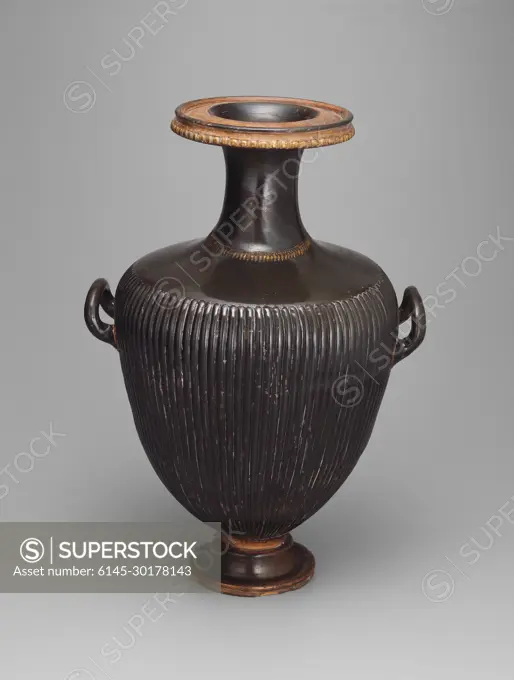Hydria (Water Jar) 350 BCE-330 BCE Puglia. The ribbed body of this vase was formed in a mold, then attached to the separately made feet, handles, neck, and mouth and coated with black gloss before being fired. Certain parts were left in the natural color which, along with the egg-and-dart pattern on the lower edge of the rim, provides decorative contrast. The pattern and the necklace represented on the neck were made from tiny pieces of clay which were gilded.. terracotta, black-glaze technique, with gilded raised clay decoration and ribbing . Ancient Greek
SuperStock offers millions of photos, videos, and stock assets to creatives around the world. This image of Hydria (Water Jar) 350 BCE-330 BCE Puglia. The ribbed body of this vase was formed in a mold, then attached to the separately made feet, handles, neck, and mouth and coated with black gloss before being fired. Certain parts were left in the natural color which, along with the egg-and-dart pattern on the lower edge of the rim, provides decorative contrast. The pattern and the necklace represented on the neck were made from tiny pieces of clay which were gilded.. terracotta, black-glaze technique, with gilded raised clay decoration and ribbing . Ancient Greek by Piemags/PL Photography Limited is available for licensing today.
DETAILS
Image Number: 6145-30178143Royalty FreeCredit Line:Piemags/PL Photography Limited/SuperStockCollection:PL Photography Limited Contributor:Piemags Model Release:NoProperty Release:NoResolution:2268×3000
